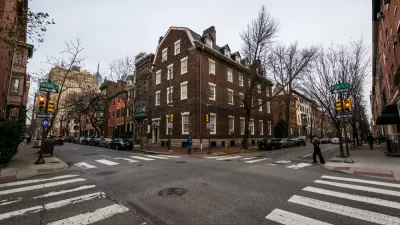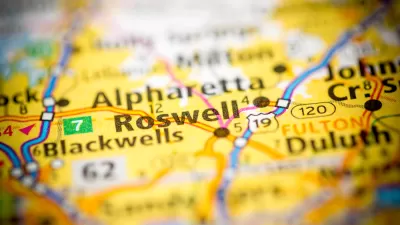The implementation of a new master plan for the neighborhood of Oakland, home to the University of Pittsburgh, is moving forward despite controversy and a contentious community engagement process.

On February 22, the city of Pittsburgh gave preliminary approval to a package of zoning changes, including new zones for mixed-use development as well as residential and office development, for the Oakland neighborhood. The changes do not represent a massive upzoning effort, however, as indicated by some of the opposition to the zoning changes, according to an article by Mark Belko for the Pittsburgh Post-Gazette.
David Vatz, chapter lead of Pro-Housing Pittsburgh, a nonprofit that advocates for abundant and affordable housing, is quoted in the article criticizing the reduction of allowed building heights in one of the zoning changes. “I think what we would love to see for Oakland is it zoned for a ton of growth and a ton of housing. I don’t think they’ve really done that,” says Vatz in the article, adding, “We’d really like to see some leadership from the [Mayor Gainey] administration and council to really zoning these areas for new housing.”
According to Belko, the rezoning will implement the Oakland Plan, a ten-year master plan for the neighborhood approved in June 2022. Additional news coverage of the zoning implementation of the Oakland Plan is available from Pittsburgh City Paper and WESA. The coverage for WESA, written by Margaret J. Krauss, provides these descriptions of the three new zoning districts that will implement the Oakland Plan:
- “Urban Center-Employment (UCE) would cover an area that includes the Fifth and Forbes Avenues corridor and a piece of Boulevard of the Allies bordered by Craft Avenue. It aims to “support life sciences, health care,” and other employment engines. Neighborhood-serving businesses are also encouraged on the ground floor. The proposed language emphasizes transit and, where parking is needed, sharing it between different building owners. Buildings would have to be at least 40 feet tall, but could reach a maximum height of between 85 and 210 feet, depending on location.”
- “Urban Center-Mixed Use (UCMU) would cover an area clustered around Boulevard of the Allies as it moves east toward Schenley Park. Buildings here would have to be at least 24 feet tall, but could reach a maximum height of between 65 and 185 feet, depending on location. The zoning rules are an effort to encourage the development of small businesses and commercial uses for the neighborhood, along with affordable and workforce housing.”
- “Residential-Mixed Use (RMU) would cover much of Central Oakland. It aims to create new housing, both through the restoration of historic homes and the creation of new apartment buildings. Retail space is also encouraged. Buildings here would have to be at least 24 feet tall, but could reach a maximum of between 40 and 95 feet, depending on location.”

Alabama: Trump Terminates Settlements for Black Communities Harmed By Raw Sewage
Trump deemed the landmark civil rights agreement “illegal DEI and environmental justice policy.”

Planetizen Federal Action Tracker
A weekly monitor of how Trump’s orders and actions are impacting planners and planning in America.

The 120 Year Old Tiny Home Villages That Sheltered San Francisco’s Earthquake Refugees
More than a century ago, San Francisco mobilized to house thousands of residents displaced by the 1906 earthquake. Could their strategy offer a model for the present?

In Both Crashes and Crime, Public Transportation is Far Safer than Driving
Contrary to popular assumptions, public transportation has far lower crash and crime rates than automobile travel. For safer communities, improve and encourage transit travel.

Report: Zoning Reforms Should Complement Nashville’s Ambitious Transit Plan
Without reform, restrictive zoning codes will limit the impact of the city’s planned transit expansion and could exclude some of the residents who depend on transit the most.

Judge Orders Release of Frozen IRA, IIJA Funding
The decision is a victory for environmental groups who charged that freezing funds for critical infrastructure and disaster response programs caused “real and irreparable harm” to communities.
Urban Design for Planners 1: Software Tools
This six-course series explores essential urban design concepts using open source software and equips planners with the tools they need to participate fully in the urban design process.
Planning for Universal Design
Learn the tools for implementing Universal Design in planning regulations.
Clanton & Associates, Inc.
Jessamine County Fiscal Court
Institute for Housing and Urban Development Studies (IHS)
City of Grandview
Harvard GSD Executive Education
Toledo-Lucas County Plan Commissions
Salt Lake City
NYU Wagner Graduate School of Public Service




























